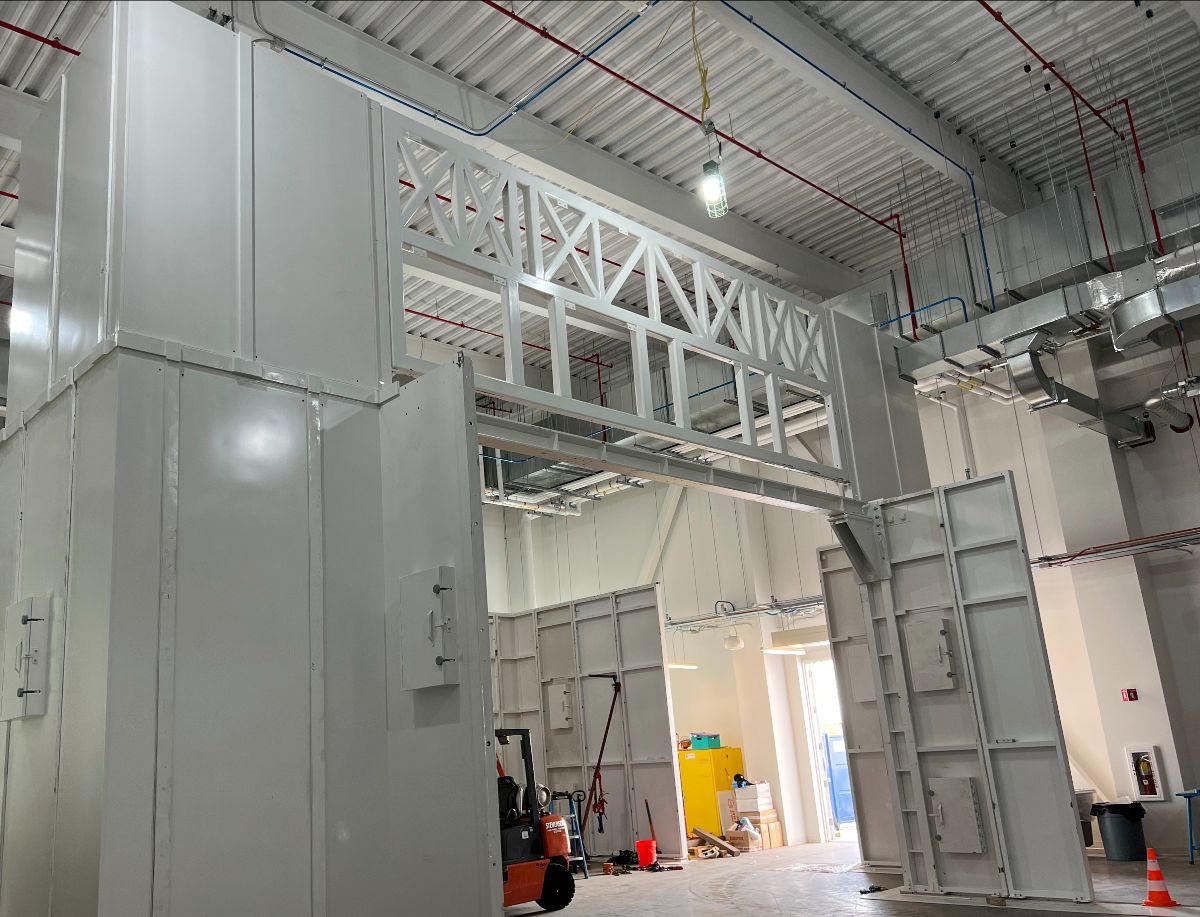
Summer is often a time to put one’s feet up and relax, but that couldn’t be further from the mood of the Advanced Photon Source (APS) Upgrade team. With a little more than 250 days to the start of the removal and installation period in April 2023, the watchword this summer is “progress.” Everywhere you look, there are signs that the upgrade is happening.
The heart of the project is the removal of the original electron storage ring and the installation of a new, modern ring that will generate brighter, more coherent X-ray beams. That ring will be made up of 1,321 powerful electromagnets, and the upgrade team has been assembling those magnets into modules atop heavy concrete plinths. 200 modules will be needed for the full new storage ring, and more than 100 of them have been partially assembled. (Those modules will further be connected into 40 sectors – check out the photo of the first fully assembled sector, at the link above.)
Work is proceeding on the new and upgraded beamlines that will be part of the APS Upgrade project as well. The spectroscopy program at beamline 20-ID is close to moving into their new home at 25-ID, and construction is almost completed there. The new Advanced Spectroscopy and LERIX (ASL) beamline at 25-ID will offer multiple enhanced scientific tools for spectroscopy, and will share space with the ultra-fast nanosecond-time-scale spectroscopy programs previously located at sectors 7 and 11.
The 20-ID program is moving to make way for the High-Energy X-ray Microscope (HEXM), a new feature beamline that will make its home in the new Long Beamline Building (LBB). Inside the LBB, construction has started on the new 20-ID hutch for HEXM (see photo). HEXM will provide next-generation imaging capabilities with zoom-in and zoom-out control, enabling breakthroughs in battery technology and materials science.
As for the LBB itself, the APS Upgrade team took full occupancy of the 20,000-square-foot space in late June. In July, the laboratory hosted the Secretary of Energy for a ribbon cutting ceremony to mark the completion of the new building. In addition to HEXM, the LBB will host the In Situ Nanoprobe (ISN) at 19-ID, a beamline with in situ and operando capabilities unique in the United States. Expect to see more photos of work inside the LBB as the two feature beamlines there take shape.
For the latest news on the APS Upgrade Project, bookmark the APS Upgrade website. On the site now you can read more about the RIXS spectrometer at 27-ID, the first APS Upgrade beamline instrument available for users, and you can catch up on the People of the APS Upgrade series. Recent profiles include Fernando Rafael, an electronics engineer working on power systems, and Mark Erdmann, who will oversee the removal of the original storage ring and the installation of the new one.
More information about conducting research at the APS for current and prospective users is available at the APS User Office website.
